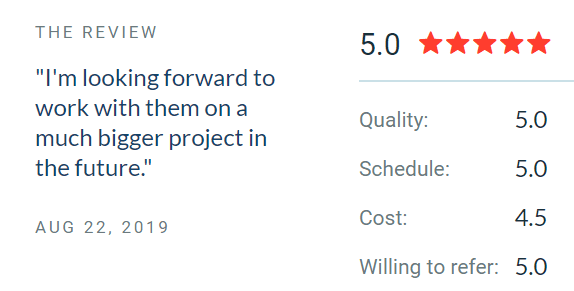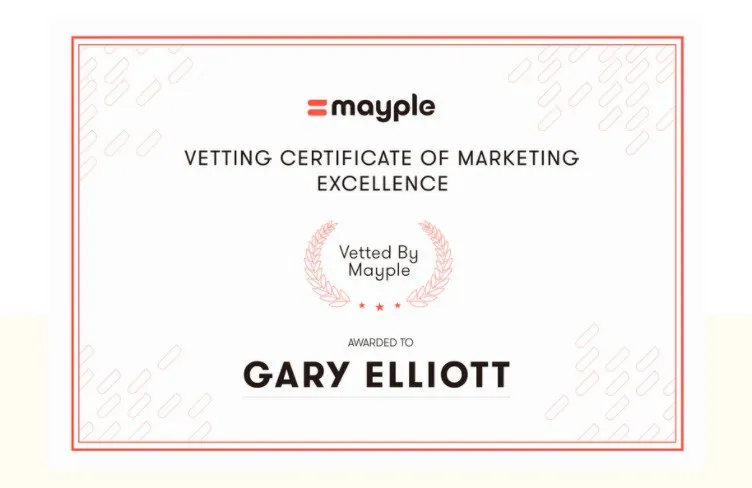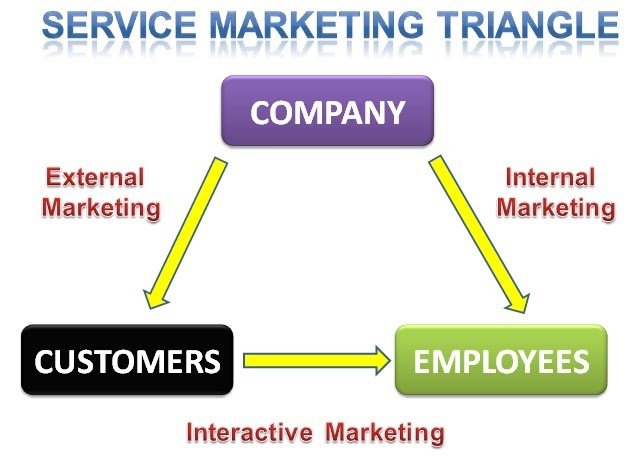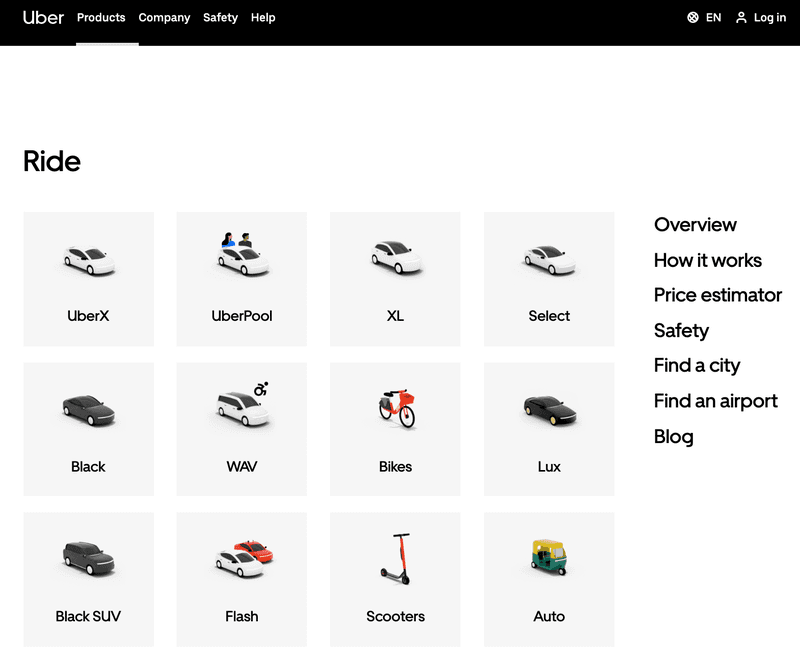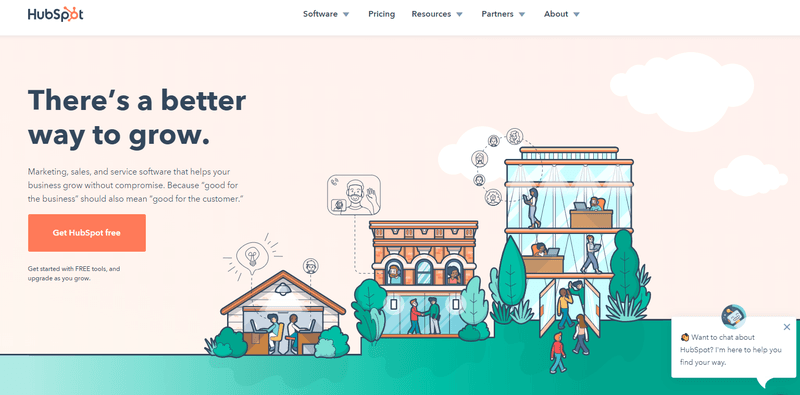How to Market a Service: 14 Service Marketing Tips For 2026
Service marketing is different. Get powerful tips and tactics to succeed with your service marketing in 2026.
Updated November 7, 2024

In the last few years, we’ve seen a massive rise in service startups. And we’re not just talking about the traditional high-tech SaaS model. There are a ton of health startups and transportation startups like Grab and Airlift.
These are companies that provide the platform but are also highly dependent on the quality of service that they offer. And for that, they need to create very engaging brand stories.
Here’s an example of a brand story from Grab:
This is some very high-level marketing, and in this article, we will break down exactly what that means and how to execute it properly.
But first, let’s start with the definition of service marketing.
What is Service Marketing?
Service marketing, by definition, is different than general marketing. When you sell a service you are basically telling your audience: buy something you will never own yourself.
So, then what are you actually selling?
You are selling an experience.
Services marketing is a specialized branch of marketing. Services marketing emerged as a separate field of study in the early 1980s, following the recognition that the unique characteristics of services required different strategies compared with the marketing of physical goods.
Unlike products, services are purchased based on the perceived value they’ll provide. From a buyer’s point of view, the skill competency level itself doesn’t really matter, rather the end result produced by those skills.
For example, an online advertising campaign can be optimized manually by an expert or by technology tools. As long as the results of the two actions are the same, the service will say “online advertising optimization”.
As a result of being defined as a value, service marketing means you need to build a high level of trust with your audience, for them to feel comfortable enough to sign the contract and trust you to hold the skills required to deliver the promised value.
Services marketing typically refers to both business-to-consumer (B2C) and business-to-business (B2B) services and includes marketing of services such as:
- telecommunications services
- financial services
- all types of hospitality
- tourism leisure
- entertainment services
- car rental services
- health care services
- professional services and trade services
In addition, delivering a service usually includes a higher level of human interaction, as opposed to a one-time transaction when buying a product (especially if purchased online).
That’s not entirely accurate of course, because a service is included in each transaction, however, when talking about services as the product, the interaction and work process is much more prominent and is perceived as part of the value the customer is expecting.
Features of service marketing
There are distinct characteristics of service marketing that make it distinct from selling products.
- Intangible - the nature of services is that you can not see, smell, or touch them. So brands have to build a lot of trust before the sale ever happens because it’s hard for a customer to sample it.
- Perishable - once the customer receives the service, it’s gone. That’s why brands need to come up with effective marketing strategies to stay top of mind and remind their customer base of the experience.
- Non-measurable - you can’t really measure a service. There are no dimensions, no weight or height or width.
- No ownership transfer - you can’t own a service, since it’s intangible, so the ownership doesn’t transfer to the customer. For example, a patient can pay for a doctor's visit but they can’t own the stethoscope.
- People are involved - a lot of people are involved so customer satisfaction becomes absolutely critical. It’s often a much more competitive market because it becomes harder to hire and train the right people.
- Variable in quality - when people are so critical to the delivery of the service product the quality becomes variable. In service marketing, a business can’t offer the same level of service to every client. Each service provider may have different skills and a lot is influenced by the external environment and the human aspect of the interaction.
7 Service Marketing Strategies And Tips
Creating strategies to market your services to customers is a whole different ball game in the service industry. The way you attract and retain your target customer is completely different for a service business.
The obvious difference between product and service marketing is that products are tangible, and services are intangible. And like we said, with a service you're selling the experience.
Here are 7 powerful strategies to help you scale your service business:
1. Trust
As mentioned above, trust is one of the main building blocks of service marketing. When you're marketing a product, your main selling point is the product itself. People can see or even feel the product, read its legal assurances, go through its features, or ask for a demo.
When you're marketing a service, all you have is... words. And even after the experience you don't have any "physical evidence" so you have to work hard to build that customer loyalty through putting customer satisfaction at the forefront of your business.
2. Customer testimonials
Customer testimonials are the best way to generate trust, and in the case of service marketing, the more, the merrier. Try to get customers that are as similar to the audience you are targeting, a.k.a your buyer persona. People tend to believe and empathize with people similar to them.
Pro tip: You can also get social proof in the form of celebrity endorsements or influencer promotions to build trust and credibility for your product.
3. Awards and badges
Service verification awards or badges can help too. There are various websites that have already gained a high level of credibility and brand awareness that can verify your product, depending on your industry. The most well-known ones in the marketing industry, for instance, are the Google and Facebook Partner badges (respectively).
4. Process
While what your service is selling is the desired end result, the elements of the process that get you there are definitely part of your value proposition. Service process features like flexibility, responsiveness and kindness can sometimes be so important that you can use them as your main marketing differentiating values.
People, process, and product - Marcus Lemonis, host of The Profit
5. Communication
Usually, delivering the end results of service takes longer than your average product sale and involves a lot more personal interaction. Your customer is expecting to be kept informed on how your service is coming along and not just waiting in anticipation for the end result.
It’s key to establish a clear communication channel with your customers. It’s one of the best service marketing strategies you can employ early on. You can do it with simple email/phone updates or via designated software tools and solutions.
You should also use social media platforms and email marketing to wow your customer with superior service at every stage of the customer journey.
6. Customization
Service at its core is customizable. The challenge is knowing how to customize enough so that the client will be satisfied, while still maintaining service scope borders and structure. Basically, there is a limit to how much you can “bend over backward” for a customer, but when marketing service they will expect some flexibility. Your service limits might be based on:
- The quantity you promise to deliver while maintaining your professional standards - even a dog walker has a limited no. of dogs, they can manage all at once.
- Pricing modifications you can afford to fit your customer’s budget/ expectations while still maintaining a positive return.
- Desired vs. realistic work pace - when it comes to timeframes the clients will always prefer the service to be completed as soon as possible (meaning now), and it is up to you to decide how soon, will really be possible. Even if you decide to speed things up, your custom deadline must be attainable.
So, define your process, communicate often, clarify expectations and goals and get working on it. That’s one of the best service marketing strategies you could have.
Speaking of clarifying expectations, here’s the last aspect of a winning service marketing strategy.
7. Value definition
The role of service marketing is to define the value of your offering. Yet, the service end results can be vague because we’re dealing with intangible products.
Defining and agreeing upon the desired results is a necessity in order to avoid disappointment. However, when marketing a service, keep in mind that the work process itself is of value all on its own. This process should be included in your value definition.
In fact, many times during the value definition process, you learn new things from your customers’ experience and might decide to change the goals of your project. In that case, it is important to have a meeting to discuss the new goals and how change may affect the process, expectations, and work scope.
- Presenting your service as the solution to their problem is the best way to trigger the emotional response that gets your key audience to sit up and pay attention.
- Highlighting the main stages of your service’s process as milestones is a way of conveying the value of your work process beyond the end results.
Any good service marketing strategy should include a highly defined value that you will provide the customer.
Service Marketing Importance
Services differ from each other at least as much as products do with their own features and qualities. In a highly competitive and saturated services market, marketers need to differentiate themselves from the competition and attract consumers.
The factors that differentiate your service from a competitor can be extremely impactful on the buyer’s decision making and those are the ones to keep in mind when planning your service marketing. Some examples of service differentiation factors that influence the buying decision are:
- Affordability - finding the right price range that your potential customers will consider acceptable for your services (and you consider profitable for your efforts)
- Functionality - simply put, that your service and value promise the best fit your customer’s needs.
- Credibility - as mentioned above, since service is intangible, a large part of the customers’ buying decision will depend on how much they trust you.
- Experience - in the particular service you are offering, no. of years in the field for instance.
- Convenience - how accessible and easy it is for your potential customers to use your service.
- Variety - customers love the ability to choose, but be mindful to define the right balance between too little and too much.
- Self-service - how much of control your customer has over their service experience, what they can and cannot do for themselves.
Customer profiling can provide the factors influencing the buying decision in your market for your type of service. This research is accomplished either by questionnaires, polls, designated tools, or external service providers.
Service Marketing Strategy
Service marketing strategy, like any other digital marketing strategy, must begin with a deep understanding of your customers, your service’s strengths, and competitive advantage.
Understanding your customer
Build customer personas, mapping what might influence their purchase decision. This can be anything from gender to age range and profession. It should also include a review of your customer’s common pain points, possible obstacles they need to overcome to complete a purchase, and how your service solves these.
Don’t forget to include information about possible customer touchpoints - where and when you are most likely to reach this or that persona (yes, there can be more than one).
Your service’s strengths
This should include the end results your service promises to deliver as well as the quality offering of your process getting there. As mentioned this can include a mixed array of characteristics: affordability, functionality, credibility, expediency, and flexibility.
Your service’s competitive advantage
It can be uncovered using the known SWOT analysis to map where you are positioned compared to your competition and where your opportunities to shine above them may reside.
People think that a SWOT analysis needs to be complicated, and it really doesn’t. Start by analyzing your competitor’s site, then look at how they use social media, influencer marketing, and email marketing, and how they actually communicate their value to their audience.
That should give you a good starting point.
A service marketing strategy is not complete without defining your positioning. Most commonly known as the 4p’s it has since expanded to 7’ps to include service marketing positioning parameters (and there is even talk of an 8th…) that define how your service is presented.
The Service Marketing Mix
The service marketing mix is very similar to the regular 4Ps of marketing that we are all used to, except it has an additional three Ps.
What are the 7p’s of service marketing?
Product
Your key service offering, the solution you provide that solves your customer’s needs. The attributes of your service on their own and in comparison to competing service providers should be included under the scope of this section and are the basis on which to build your service marketing strategy.
Services are more complex than physical products and can include design, technology, UI/UX, perceived usefulness, securities, and so on.
Price
Price is a key decision that will influence both customer acquisition and subsequent satisfaction. You will need to be aware of your target audience’s price sensitivity range (and what prices your competitors are offering). While the price is often taken as an indicator of quality in general, price perception is heightened when it comes to an intangible service. It’s like putting a price on happiness, where happiness is the result of the service you provide.
- Common service price strategies: Penetration pricing: starting low to acquire market share and then increasing as you grow.
- Economy Pricing: setting a low price that’s hard for your competitors to beat (if you can remain profitable doing so)
- Premium pricing: High-end pricing, justified by unique value in return.
- Product Line Pricing: breaking down your service into service tiers with separate prices that increase as your offered services and value expand.
(There are more, which you can read about here.)
Place
When it comes to offline services (healthcare providers, household upkeep, legal services, etc.) proximity is a determining factor. The closer (and more accessible) you are to your targeted audience the high your purchase probability. As the saying goes - location, location, location.
When in reference to online services the purchase is made virtually, but the ease of purchase and accessibility are still determining factors to consider: secure payment, type of transaction, account management, and more.
Promotion
When it comes to services, promotion often refers to placement, as in where your online presence should be in order to reach your target audience. And positioning completes the “what” you will be showing. For instance, where you might run promotional ads or content marketing (Adwords? Facebook? Content syndicator?) and what messaging they will contain.
People
People are the main focus when it comes to service marketing. As we’ve mentioned above your service credibility and success rely on your ability to develop a healthy relationship with your audience. It's critical to develop and manage customer relationships properly. That is why you must pay close attention when defining your customer communication protocols, it is one of the factors by which your service will be measured.
Process
As you now know, with service marketing, it’s not just about the end result but how you get there. Process defining ensures that your service is perceived as being dependable and that expectations will be met. Do you include customer support and how is that carried out is just one example for this point?
Physical evidence
What we referenced above as trust is built by proving you’ve kept your promises in the past, and have unbiased evidence to support your claims.
Service Marketing Types
Service marketing often requires more explanation as to why the customer needs the product, how it works, and why you are the best entity to deliver the service. However, customers are not the only target audience that needs to be educated about your service.
Service marketing education flows 3 ways, also known as the service marketing triangle:
- Internal marketing – marketing from the company to the employees. Getting employees on board and behind what your service offers. This is done through training, building trust, and empowering employees to become ambassadors of your service.
- External marketing – the more obvious marketing flow from the company to the customers. This is achieved through display advertising, sales promotions, public relations, direct marketing, and online marketing.
- Interactive marketing – marketing between the customers and the employees at their various touchpoints in the marketing funnel. This includes personal selling, online customer support, and interacting with customers on social media.
The service marketing triangle represents all possible interactions within the services sector, and how different types of marketing can be used based on interaction participants all to accomplish the end goal of service sales.
Inbound vs Outbound in service marketing
Another common marketing flow distinction is between Inbound vs. Outbound marketing, which refers to the manner in which your marketing message gets attention.
Outbound marketing
Also known as “push” marketing, places your service marketing message “in your customer’s face” at the time and place where you believe they are most likely and ready to interact and purchase your service.
Examples would be Print/TV/radio advertising, organic social media, social media advertising, cold calling, direct mail, email blasts, and other methods that are sent to a large audience in hopes to catch a few, like casting a fishing net.
Inbound marketing
Also known as “pull” marketing, attracts customers who are actively looking for a service like yours. Inbound marketers nurture, educate, and guide them toward your service. This is done via website content, blogs, downloadable white papers, guides, tip sheets, and more. When using an inbound approach, content is often aligned with specific points in prospects’ buyers’ journeys from generating awareness through comparison and education about your service up to the final purchase decision.
There are advantages and disadvantages to both methods, and the best service marketing would be a combination of both. Either way, the messaging you need to keep in mind will always be your service differentiation factors.
Service Marketing Examples
Here are some of our favorite examples of service companies that have built incredible customer loyalty and have become household names.
B2C Service marketing examples
Most companies in the service sector are B2C so let’s start with those.
Airbnb
Airbnb is a marketplace online, for lodging and tourism experiences. The company’s “product” is their brokerage service, which matches travelers with vacation listings of all sorts according to their needs (location, duration, costs, accommodations).
The listings are screened and vetted according to Airbnb standards, which builds trust with their users when booking a location. The marketplace business model means they don’t own any of the offered listings but collect a commission from each booking.
Their service targets two distinct audiences from both sides of “the deal”: travelers and listing owners, each benefiting from a separate set of service values. Travelers get to choose from a variety of trustworthy listings that fit their specific needs (affordability, trust & customization).
And listing owners enjoy exposure and booking management via the platform, which is conducive to positive customer experience and boosts their standing and reviews in return.
Uber
Uber is an on-demand transportation technology that connects driver-partners with riders. For riders, Uber is a great service that helps them get exactly where they need to go faster while drivers benefit from their time behind the wheel and earn some income. The core value here is flexibility for everyone involved (rider and driver).
However, Uber also works on building credibility and trust. It builds credibility with rider built-in reviews, and trust with safety guarantees for both riders (driver screenings and safety tools) and drivers (incident response teams, insurance, and other safety tools and services).
B2B Service marketing examples
Now let’s move on to B2B service companies that have made their mark on the way we do business.
Hubspot
HubSpot offers a full stack of software for content, social media, marketing, sales, and customer service, with a CRM as its core product. It’s a perfect tool for a service business of any size. This type of “all-inclusive” solution is a common B2B service model whose allure of having everything under one controllable hub is great.
Their service marketing focuses on several differentiating factors such as: Affordability - Hubspot opted with Product Line Pricing - offering a core functionality for free, with additional “hubs” for the rest of the marketing and sales as part of the “helping companies grow” concept, which is part of their brand and value proposition.
Credibility - Showing achievement statistics of no. of users, certifications alongside case studies.
Convenience and self-service - all marketing, sales, and service activities are simple and easy to set up by the customer.
Variety - while Hubspot is essentially an “all you could want” solution, they do leave the customer the option to pick and choose their customized combo. So you decide how involved you want to be.
Facebook Ads is the advertising platform for Facebook, where businesses and brands create targeted advertising based on audience characteristics (demographics, interest, web activity and so much more). It’s currently the most powerful way for any brand to advertise on social media.
It is marketed as a highly self-service and convenient advertising service, which is also extremely customizable for any size business for any purpose (from promoting a cause to selling online).
It utilizes the information Facebook has on its users to generate income by “selling” marketers the opportunity to “push” their most relevant outbound marketing ads in front of the most relevant audiences. The more targeted the ads, the higher their conversion rates, and the lower the cost per conversion becomes for the advertiser.
The 7 most important service marketing strategies in 2026
As you have seen service marketing can be challenging without a tangible product to display, and what you are selling is, in fact, your word that you can keep a promise. As you move forward with this process, here are the top 5 service marketing strategies that you should keep in mind:
- Know your audience: find out everything about them that is relevant to your service. You need to use this knowledge to decide where to find them and how to approach them to be convincing.
- Define your service values: this includes the end results you promise to provide, but should also include the steps in the process of getting there. Put yourself in your customer’s place and keep asking ‘why?’ to uncover these values.
- Build a relationship with your prospects and customers: plan out your communication channels and customer support. Nurture prospects with inbound marketing until they can make an educated purchase.
- Familiarize yourself with your surroundings: chances are your service has some sort of indirect or direct competition. Keep an eye on the competition, their weaknesses could be used in your service marketing as advantages.
- Continuously build trust and credibility with customer reviews and service ratings, appearing incredible & relevant service listings, creating and sharing case studies, and encouraging customers (find the right incentive) to act as service ambassadors. Building a good reputation is a great asset to your service marketing.
- Nail your brand voice - a brand voice is super important because it’s how your brand sounds and comes across to the customer. Create customer personas and guidelines for how your brand should sound, and evaluate them regularly to perfect your brand voice.
- Use social media for your research - a lot of your research should be focused on how other service brands use social media for their marketing. You should look at the examples of posts from your competitors and see what you could take away from them.
- Use search engine optimization (SEO) - organic traffic from search engines is one of the largest acquisition channels for services brands. A local business should use local SEO to attract their ideal customer and that’s usually the most powerful promotion there is for that business.
Mastering Service Marketing: Strategies for Success
Service marketing is very different from product marketing. You need really define your value, target your customer persona, clarify expectations, and build a lot of trust with your existing customer in order to succeed.
Perhaps the most important tip we could give you is to document your successes often and present them on your site and at the relevant customer touchpoints along the customer journey. We’ve covered a lot of service marketing strategies and examples in this guide, hope you enjoyed it. Good luck!


